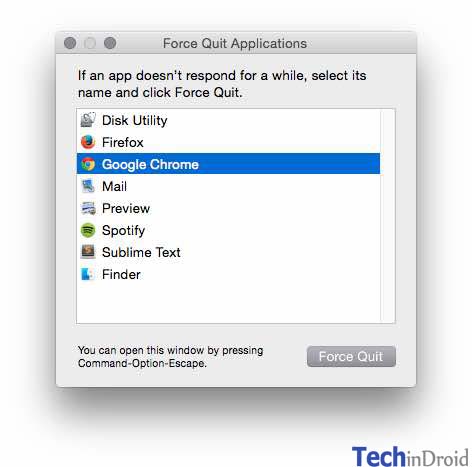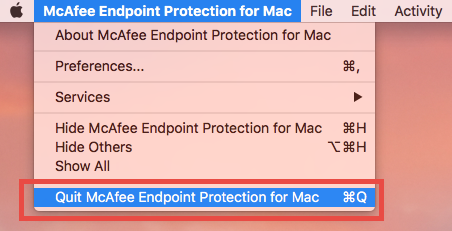

- #MAC QUIT ALL NETWORK PROCESSES HOW TO#
- #MAC QUIT ALL NETWORK PROCESSES PC#
- #MAC QUIT ALL NETWORK PROCESSES SERIES#
- #MAC QUIT ALL NETWORK PROCESSES MAC#
#MAC QUIT ALL NETWORK PROCESSES MAC#
When your Mac starts to run slower than usual, head to Activity Monitor and get a list of all running processes. It also allows keeping an eye on resource-hungry apps. It shows CPU consumption, RAM usage, and storage used. This in-built utility helps identify how apps are consuming resources. To see what is running on your Mac, you should always use Activity Monitor. Method 2 – Kill Running Processes using Activity Monitor
#MAC QUIT ALL NETWORK PROCESSES HOW TO#
To learn how to use it, follow the next method. Also, you can use Activity Monitor to identify apps taking up too much system resources and making things difficult.

Restart your Mac and experience the difference.Īlternatively, you can press Command+Option+Esc keys to access the Force Quit tool. This will instantly close the frozen application. Confirm the action by again clicking Force Quit. Next, choose the frozen application, click Force Quit. Select Force Quit from the list of options.ģ. Click the Apple log in the Mac menu barĢ. In such cases, the best way to get rid of these apps and to save power is to force close the apps. This means, even though they are not working, they are still taking system resources. When an app refuses to close it’s a sign of it being unresponsive. 3 Best Ways to Force Quit Mac Background Running Processes Method 1- Force Quit frozen applications Here we will discuss the 3 best and easiest ways to kill Mac background processes. To learn how you can kill the background processes read the blog till the end. If that’s your case, please add a “ -9” before the dollar sign, like this: kill -9 $(lsof -t -i:”Port #”).How To Stop Background Processes Running on Mac? Sometimes, what we describe above may not work for some apps with higher privileges. Once you’ve found the specific port number, please type the following command to kill the process: kill $(lsof -t -i:”Port #”) For this method, you’ll need to use the Terminal, and in the command prompt, you must enter the following command: lsof -i: port # For this method, you’ll use the killall command followed by the application’s name.

Additionally, you can be more drastic and kill all the process that contains the app’s name at once.You must enter kill followed by the PID (for instance, kill 12347), and the process will be terminated immediately. That being said, there are three main ways of killing a process by using the Terminal. Still, we recommend being familiar with the process ID as it makes everything straightforward. Otherwise, it may lead to unwanted consequences. How to terminate processes using the Terminalīefore terminating that particular process, please make sure it is the correct path. You will then get a result showing all the information about that particular process. You can use it together with the ps -ax command. You can also find a particular process by using the grep command. You may also identify them using their PID. But you don’t have to worry – you can see what each process is about as they are identified in the CMD column correctly. However, it can be a bit overwhelming to find a specific process as there may be too many for you to count. Other information includes the process name and its location. There will be other details, such as the PID and the running time, for instance. The next step is to type ps -ax, and you’ll see the list with all the active processes in your device. How to access the processes from the Terminal More: How to Fix macOS Wants to Use the System Keychain.When you first open the Terminal tool, it will always be opened at the Home Folder. The second line allows you to enter and execute commands it is known as the “command prompt.” You will notice that this zone has your device’s name besides your account name. The first sentence should tell you the exact date of your last log-in. Once the tool starts running, you’ll see how a window opens and starts showing text. You will see a particular icon that resembles the following characters: >_. You can do this by going to the Utility folder or by typing “Terminal” in Spotlight. More: How to Fix “macOS needs to repair your library”Īs with everything else, the first step you should take is to open the Terminal tool.You may view directories, modify files and see detailed data about the active processes, as we explained above.
#MAC QUIT ALL NETWORK PROCESSES SERIES#
Not only can you kill processes, but you also conduct a series of different tasks that will make using your laptop a lot easier. As a terminal emulator, the application provides text-based access to the operating system, in contrast to the mostly graphical nature of the user experience of macOS.
#MAC QUIT ALL NETWORK PROCESSES PC#
The OSX Terminal is similar to what the Command Prompt is for PC users. How to terminate processes using the Terminal.



 0 kommentar(er)
0 kommentar(er)
